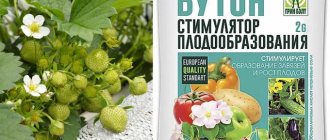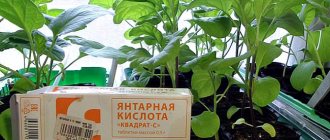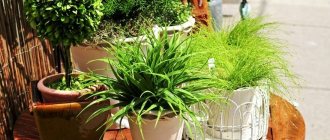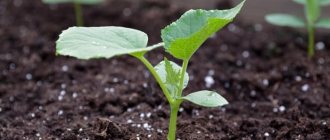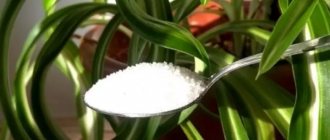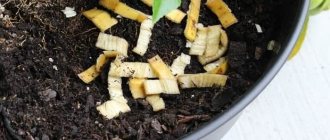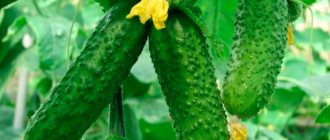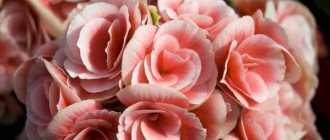Gardeners around the world have been using ash as fertilizer for their plantings for many decades. And its beneficial properties were studied in the 19th century. In this article we will tell you everything gardeners need to know about ash: how to get it, why it is so good, what plants it is suitable for and how to fertilize it correctly.
Ash gained its popularity due to its availability, ease of obtaining and ease of use. Moreover, add to this a composition rich in useful microelements. Why is feeding with ash so useful:
- promotes alkalization of acidic soil;
- helps speed up the adaptation of seedlings in the soil;
- activates the growth of plantings;
- has a preventive and therapeutic effect in the fight against pests and diseases;
- improves the condition of the root system.
Composition and benefits of ash for plants (table)
In the table below we show the composition of wood ash as a fertilizer:
| Component | % (percent) | Action |
| CaCO₃ (calcium carbonate) | 17 | Activates vegetation and flowering, helps ovaries to form normally. Accelerates metabolic processes and improves the absorption of beneficial microelements. |
| CaSiO₃ (calcium silicate) | 16,5 | It nourishes the roots, especially in bulbous plants, and helps to better absorb vitamins obtained from the soil. |
| CaSO4 (calcium sulfate) | 14 | Helps improve soil quality by activating the production of beneficial enzymes. Increases plant resistance to adverse conditions and diseases. |
| CaCl2 (calcium chloride) | 12 | |
| K3PO4 (potassium orthophosphate) | 13 | Increases the endurance of plants and their resistance to temperature changes. Prevents the formation of ammonia in the leaves. Regulates water balance. |
| MgCO3 (magnesium carbonate) | 4 | Promote the formation of cellulose and starch by activating the process of carbohydrate synthesis. They regulate water balance, improve the passage of moisture to the roots and stems, and activate the formation of useful enzymes in the soil for the growth and development of garden crops. |
| MgSiO3 (magnesium silicate) | 4 | |
| MgSO4 (magnesium sulfate) | 4 | |
| NaPO4 (sodium orthophosphate) | 15 | |
| NaCl (sodium chloride) | 0,5 |
General properties of ash for seedlings
The use of wood ash when growing fruits and vegetables, garden flowers and indoor plants helps:
- enhance metabolism in plant tissues;
- intensify growth;
- normalize biochemical processes;
- protect plants from pests;
- improve the composition of the soil and reduce its acidity.
What types of ash are there: types and content of substances in them (table)
Not all ash is suitable for use. If you are going to burn the garbage collected in the spring, where there is paper or old boards mixed with branches and leaves, then the resulting ash will be completely useless, and even completely destructive for the plantings.
But even when burning organic matter, the ash that comes out differs in its chemical composition depending on what exactly ended up in the fire. Calcium-rich ash is obtained from the combustion of soft wood; it is also present in hard wood, but in lower concentrations. Old wood contains much less potassium than young wood. It remains in sufficient concentration after burning buckwheat stems and sunflower stems, as well as grass rhizomes.
Ash is primarily a potassium fertilizer; it contains the most of it. In the second and third, phosphoric and calcium. Below we have given the average concentrations of the main mineral elements contained in ash of various origins:
| Plant type | Potassium, % | Phosphorus, % | Calcium,% |
| Sunflower stems | 35 | 18 | From 18 to 20 |
| Buckwheat (straw) | 30 | 3 | 17 |
| Rye (straw) | 12 | 5 | 9 |
| Wheat (straw) | From 11 to 18 | From 4 to 9 | From to 7 |
| Potato tops | From 20 | Less than 8 | Less than 32 |
| Birch | Less than 11 | 5 | From 35 to 40 |
| Spruce | 3 | 3 | 24 |
| Pine | 11 | Around 5 | From 30 to 40 |
| Peat | From 0.5 to 4.8 | From 1.2 to 7 | From 15 to 26 |
| Dung | From 10 to 12 | From 4 to 6 | From 7 to 9 |
Preparation of ash solution
To improve garden crops, ash solution is most often used. It is diluted simply and is ready for use immediately after preparation. If we are talking about a solution for soaking seeds, then take 200 g of water and dissolve a teaspoon (2 grams) of sulfur suspension in it. The seeds are disinfected in it for two to five hours (depending on size), dried and sent to cups with soil.
To work on the scale of the entire garden, take one and a half glasses of powder (150 grams) per bucket of water and, without allowing solid particles to settle to the bottom, the contents of the bucket are poured under the trees.
When you can and cannot use ash
Ash is a multifunctional product, but even it must be used wisely, based on the needs of your soil and plants.
To alkalize the soil, it is added to highly acidic soil when plowed in the fall or spring. When root feeding, dry ash added to the bed must be diluted by watering.
It is strictly not recommended to apply ammonia, nitrogen and phosphate fertilizers along with ash.
Ash can be used to treat plantings both in open ground and in a greenhouse in several ways:
| Type of fertilizer | Components | Mode of application |
| Ash infusion (extract) for seeds | 6 tbsp ash, 2 l. water. | The ash is poured with water and left for a week, shaking occasionally. The resulting infusion should be filtered and diluted with three volumes of water. |
| Low ash solution | 2 tbsp ash, 1 tbsp. water, 25 g of garden green soap (if you don’t have it, you can use regular laundry soap) | Dissolve the ashes in water, then add grated soap. To dissolve it better, you can pre-soak it in a small amount of warm water. The planting solution is sprayed for the prevention and control of garden pests. |
| Powder | 1.5 kg | Experienced gardeners sprinkle potato tubers before planting them in the garden. Ash powder is scattered at a short distance from the roots of the bush so that caterpillars and slugs cannot get through it. It also helps in the fight against various forms of rot. |
It is strictly not recommended to introduce ash into the soil in the following cases:
- if crops that prefer acidic soil grow on it (cranberries, blueberries, azaleas, hydrangeas and others);
- the soil on the site contains a significant amount of alkali;
- less than a month ago, nitrogen-containing fertilizer (manure, droppings, urea, saltpeter) was applied.
Deoxidation of soil mixture
Wood ash for the garden can be used not only as fertilizer. If the soil on the site is acidified, you can use ash to deoxidize it. Usually, fluffed lime, dolomite flour, etc. are used for this purpose. If used correctly, the powder will be a good alternative for them. It is best to take the combustion product of peat. It is he who actively reacts with the acid and neutralizes it.
Deoxidation is carried out in the fall. To do this, the crushed preparation is evenly scattered onto the surface. Approximately 3-3.5 cups per square meter. m. Then they take a rake and actively loosen the soil mixture, mixing it with the composition, otherwise it will be washed away by the first rain or blown away by gusts of wind. If the area is to be dug up, you can apply the product during the process. The norm is the same, the depth of embedding is no more than the bayonet of a shovel.
If your garden contains crops that prefer acidic soil, such as conifers, heathers, rhododendrons or hydrangeas, there is no point in deacidification. This will worsen the conditions for their development and have a detrimental effect on the plants. You need to know that alkalization has a bad effect on some weeds. This can be used to simultaneously fertilize the soil mixture and destroy wheatgrass, horsetail, and wood lice.
Instagram @ogorodko
Instagram @vogorodelebeda
- Landscape
How to prevent weeds from appearing on your site: 7 ways to make your life easier
On what soils is ash used and on what soils is it prohibited?
Ash will be an ideal fertilizer for the following type of soil:
- Low calcium soil.
- Soil with a high level of acidity (pH - less than 5.5), since the use of ash increases the acidity level.
Ash can increase the acidity of the soil so much that the ability of plants to absorb nutrients will decrease and the plantings will wither and die.
Main effect on plants
- Due to the high concentration of potassium, ash improves the absorption capacity of the root system, increases the resistance of seedlings to temperature changes, and improves the taste of fruits.
- Phosphorus, which is part of the ash, activates metabolic processes in plant tissues.
- Calcium increases the protective barrier and enhances the growth of seedlings.
- Magnesium is necessary for plants during flowering.
How to determine that plants need ash
The main components of ash are several types of magnesium salts, chemical compounds of potassium and calcium. In nature, they are found in almost every type of soil, but their concentration may not be enough for planted garden crops to grow and develop normally. How can you determine that your soil is lacking exactly these elements?
| Signs of deficiency | |
| TO | The leaves curl and lose color, the flowers and ovaries wither, darkening appears on the fruits, and plant growth is inhibited. |
| Ca, Mg | Deformation of leaves, drying out of their edges, loss of aroma in blooming roses |
| Signs of excess | |
| TO | The leaves lose their bright color, fall off, and the flesh of the fruit becomes covered with brown spots. |
| Ca | The leaves fly away, young shoots die, and chlorosis appears. |
| Mg | Plant roots die, resulting in impaired nutrient absorption. |
How to use in the garden
In order to use the wood combustion product as a fertilizer, it is necessary to carry out some preliminary steps. It is especially important to combine dry ash with the ground before use. For root feeding, it is possible to use the product in dry form, simply spraying it on the ground. Foliar feeding can be carried out according to the following schemes:
- Dilute 150 grams of dry matter in 10 liters of water. Then stir, leave for 10 days and use for fertilizer;
- Combine 1 kilogram of ash with 10 liters of water and boil for 20 minutes. Use for feeding.
Which plants require fertilizing with ash?
Wood ash rightfully holds the title of the best natural organic fertilizer. It plays an irreplaceable role in the formation of soil structure: it significantly reduces its acidity and has a beneficial effect on the vital activity of soil microorganisms. Reducing soil acidity leads to the neutralization of a large number of insect pests and pathogenic microorganisms, such as:
- aphid;
- powdery mildew;
- Colorado beetle;
- cruciferous flea beetles;
- slugs
This has a beneficial effect on the rooting of seedlings, and also helps soil microorganisms in the decomposition of organic matter and its transformation into elements accessible to plants. Different macroelements predominate in the combustion product from different plants:
- high calcium content and pronounced deoxidizing properties: aspen, spruce, pine, linden;
- high potassium content: any young trees, sunflowers, grasses;
- high phosphorus content: straw, potato tops.
The high content of macro- and microelements in the ash promotes active fruiting of various crops.
A significant part of garden and vegetable crops react positively to this fertilizing:
- High calcium content affects the formation of new foliage, improves metabolism, increases immunity, and resistance to disease. Cucumbers, onions, parsley, strawberries, apple trees, and grapes react positively to it.
- The high potassium content allows you to retain moisture, micro- and macroelements in the tissues. Lilies, chrysanthemums, roses, and grapes react positively to it.
- The high phosphorus content has a beneficial effect on the formation of a powerful root system and root crops. This works well for tomatoes, cucumbers, and pumpkins.
- The high magnesium content affects the formation of starch, therefore suitable for potatoes and tomatoes.
It must be remembered that a number of crops are prohibited from feeding with this substance:
- carrot;
- marsh berries: cranberries, blueberries;
- watermelon;
- radish;
- sorrel;
- hydrangeas and rhododendrons.
Wood combustion products should not be used as fertilizer if the plant contains excessive amounts of potassium and calcium.
- too much leaf growth;
- significant death of shoots;
- loss of leaves in ornamental flowering plants.
Signs of excess potassium include the acquisition of a brown color and bitterness in the taste of fruits, as well as excessive loss of leaves in plants. Each feeding has its own appropriate time. The combustion product of wood, ash, is best for use in the fall, some time before the harvest ripens, when plants really need potassium.
In what form is ash used as fertilizer?
Ash is a truly unique fertilizer. Without making material costs or investments, we get excellent nutrition with a balanced nutritional composition.
Liquid fertilizer
There are several ways to prepare an infusion of ash for feeding plants:
- 150 g of ash, 10 liters of water. The dry powder is poured with water and infused for 24 hours. It needs to be stirred from time to time. The resulting solution must be filtered.
- 150 g ash, 2 tbsp. boiling water The ash is brewed with boiling water, covered with a lid and left to infuse for a day. Before use, the substance must be diluted with three volumes of water. This composition can be used to feed perennial berry and fruit plantings, annual plants and ornamental flowers.
Dry fertilizer
Dry ash is used in the following cases:
- The land is being prepared for future plantings.
- Fertility needs to be increased.
- Preventative treatment of crops against pests and diseases is planned.
When preparing a bed for planting, dry ash mixed with soil is added to the hole at the rate of 100-200 g per 1 square meter. m plot.
Coarse ash is ideal for pollinating a lawn in autumn or early spring.
Dry ash can replace light liming; it slightly neutralizes the pH level of the soil. The best alkalization of the soil is the ash remaining after the combustion of peat.
Ash fertilizer for pests
Ash is an ideal tool for controlling small invertebrates. Snails and slugs, moving through the ashes, receive powerful irritation of the mucous membrane, resulting in dehydration. This leads to the death of insects. Therefore, gardeners recommend sprinkling the space near the bush with ashes in a circle. But this product should be used only on low-alkaline soil, otherwise there will be excess calcium in the soil, especially after heavy watering or rain.
Dry ash is used to dust plants. For potato tubers, a two-liter container of ash per 40 kg of seed is sufficient. This will help in the fight against stick insects and the Colorado potato beetle; such plantings will be less attractive to them. Young shoots of cabbage and onions are powdered at the rate of 1 tbsp. per square meter.
Ash is an effective means of controlling ants. To do this, just pour a glass of ashes into the place where they accumulate.
Ash can save some cruciferous plants (radish, carrots, green onions, cabbage) from attacks by various flies and white flies. But cabbage will require additional treatment with an ash solution against caterpillars.
To protect berry and fruit crops from various types of pests, you can use the following composition recipe: For each liter of water used, take 100 g of sifted ash. The ash should be poured with water and boiled for 30 minutes, after which the solution should be cooled, settled and diluted with liquid so that the total volume of the substrate is 10 liters. Later you can add 40 grams. laundry soap, grated on a fine grater for better dissolution. Treatment of plantings is carried out either in the evening after sunset, or in cloudy weather in the absence of wind.
Another composition will help in the fight against aphids:
- 1 cup sifted ash,
- bucket of water (10 – 12 l),
- a tablespoon of grated laundry soap,
- 2 tbsp. l with a slide of urea.
All ingredients are mixed together and left for 48 hours, stirring occasionally. The resulting solution is sprayed onto the leaves of the plantings.
Ash from diseases
It is customary to fertilize plants that have been attacked by fungal diseases (powdery and sour mildew, blackleg) with ash. It is effective for radishes, radishes, rutabaga and cabbage. But in addition to ash, experienced gardeners recommend adding tobacco dust in a 1:1 ratio. You can start processing plantings when they have 2 full-fledged leaves.
The substrate made from ash and soap showed good effectiveness:
- Two three-liter jars of sifted ash are filled with 10 liters of hot water and left to infuse for at least 48 hours.
- For greater efficiency, water is replaced with a decoction of tansy, yarrow or tomato tops.
- The finished solution is filtered, after which pre-grated 40 g of laundry soap are added to it.
- The resulting mass is thoroughly mixed and placed in the sprayer.
Treatment by spraying can be carried out every two weeks.
In order to protect berries from gray rot, you can dust strawberries, victoria or strawberries with dry ash at the rate of 2 tbsp. on the bush.
For making compost
Many gardeners don't even realize that ash is an excellent composting agent. It activates the decomposition processes of organic compounds, so it will be useful to sprinkle a small amount of ash on each new layer of compost to increase its nutritional value.
Advice! When preparing a solution from ash, it is often recommended to add vinegar. The fact is that the latter, being an acid, helps calcium, which is slightly soluble in water, transform into a form that is digestible for plants. If you add ash, especially one that has been left in the air, to acidified water, bubbles appear: the slaked lime is converted into calcium acetate, water and carbon dioxide. The resulting calcium compound is better absorbed by plants. When using fresh ash, you may not see bubbles at all, but the longer it is stored, the more violent the reaction will be. Add 9% vinegar, about 200 ml per 10 liters of water and 1 cup of ash.
Useful tips
When feeding seedlings with ash, you should adhere to the following tips:
- Ash is well absorbed by the soil, so before planting seedlings, pour it into loosened beds.
- To prevent the ash from being blown away by the wind, cover it with mulch.
- To combat aphids and powdery mildew, use ash infusion.
- Choose calm days for work.
- Regular fertilization with ash helps get rid of wireworms.
- Spraying with an ash solution makes the leaf blades hard and unattractive to insect pests.
- Ash is used for preventive purposes against fungal diseases.
Fertilizing with ash is not a mandatory procedure for seedlings, but it helps get rid of pests and accelerate the growth and maturation of the plant. With its help, anyone can create their own universal fertilizer, which will help them get a rich and healthy harvest.
Multicomponent fertilizers with ash
Ash can be successfully combined with other substances and used to feed various plants in your garden:
- Ash and salt . Well suited for fertilizing plants at the stage of fruit ripening (July, August). To prepare it, a glass of ash is mixed with 1 tbsp. salts and dissolve in 10 liters of warm water. The resulting substrate should be left for at least an hour, after which 0.5 liters of solution should be poured under each bush. It is strictly not recommended to spray plantings with it.
- Ash with iodine and boric acid . This solution can be used as root and foliar fertilizer at the beginning of fruit set, at the end of June and in subsequent months. This fertilizing improves the quality of the fruit and increases the plant's resistance to disease. 1 kg of ash needs to be boiled in 10 liters of water, after which 30 drops of iodine and 1 tsp of boric acid are added.
- Ash and yeast . This feed is prepared in two stages. First you need to make a mash of 10 g of yeast, a couple of tablespoons of granulated sugar and three liters of water. The ingredients are mixed, after which the substrate is placed in a warm place for several days, depending on the temperature at which it will all ferment. As soon as the vigorous solution reaches, a glass of ash is poured in and the volume of the solution is added to 10 liters. Each bush at the root is “treated” to a half-liter glass of this heady cocktail. This fertilizer is effective for fertilizing seedlings in the spring (April, May), as well as the growth of young bushes until the end of June.
- Ash and grass . Many weeds that are easy to find in every area will be an ideal addition to the ash solution (nettle, burdock, etc.). They are poured into a container, filled with double the volume of warm water and left for a week, stirring occasionally. 300 g of ash is added to the resulting herbal infusion. This type of fertilizer is used for root feeding based on the calculation of 600 ml per bush.
Foliar feeding with ash
Foliar feeding can be done not only with an infusion of ash, but also with a decoction. To do this, sift 300 g of ash, pour boiling water and boil for 25-30 minutes. After which the broth is cooled, filtered and diluted with 10 liters of water. To make the fertilizer stick to the leaves better, you need to add 40-50 g of laundry soap to it.
Spraying with ash decoction helps protect crops from diseases and pests, in particular from wireworms, aphids, cruciferous flea beetles, nematodes, slugs, and snails.
Using ash in the garden
Many garden plantings (lettuce, carrots, pears, etc.) do not tolerate the presence of chlorine in fertilizers, so ash will be an ideal fertilizer for them. But lovers of slightly acidic soils (cranberry, blueberry, mountain ash, juniper, etc.) will react poorly to adding ash to the soil.
Digging the soil mixed with ash in autumn and spring will help get rid of some annoying weeds (wheatgrass, woodlice, horsetail, etc.), since they do not like alkaline soil.
90% of those vegetables that grow in the average garden in Russia need such fertilizer, both in Moscow and in the Urals and Siberia.
General rules for fertilizing with ash in the garden
- It is recommended to dig up the beds in which dill and onions will be planted next year in the spring, in the fall, along with ash at the rate of 1 cup per square meter. In this way, you will not only improve soil aeration, but also have a preventive effect against root rot.
- Potatoes are one of the most popular plants on the site; to increase productivity in the spring, dig up the site of future plantings along with ash, adding a glass of ash per 1 square meter of field. Another option is to pour ashes directly into the dug hole, but a little, no more than 2 tbsp. It is important to remember that pure ash should absolutely not be used; be sure to mix it with soil. After it’s time to hill up the potatoes, you can dig 1 cup of ash into the bush for better growth.
- For zucchini, squash and cucumbers, you can add 1 tbsp. ash when preparing the bed and digging the soil, or pour 1 tablespoon of ash into the hole, after mixing it with the soil.
- For cabbage, dig up the soil in the future bed along with ash (1 tbsp per 1 sq. m). The same feeding method is suitable for various salad greens, radishes and peas. Twice as much ash will be needed for the soil where peppers, eggplants or tomatoes will be planted. When planting them in the ground, you can also add a handful of ash to the holes.
- You can also water the beds with garlic with an ash solution (1 liter of ash per bucket of water, leave for two hours) at the rate of 5 liters of infusion per 1 sq.m.
Contraindicated components for fertilizers with ash are any nitrogen mineral fertilizers: ammonium nitrate, ammophos, ammonium sulfate.
Feeding seedlings with ash
Seedlings can be fed with ash fertilizers only when the plant has two full leaves. Otherwise, the substances contained in the ash may have a detrimental effect on the growth of crops.
By observing all the necessary proportions, you can prepare an excellent solution that is suitable for disinfecting the material used for sowing:
- It is recommended to soak the seeds for 3-6 hours in an ash solution that has been strained and infused for a day or two under a closed lid (20 g of ash per 1 liter of water). Suitable for tomatoes, peppers, cucumbers, eggplants.
- If the plant is propagated by tubers and bulbs, then this material is treated with a solution of the same concentration, but the dosage is tripled due to the increased volume.
cucumbers
Ash for feeding cucumbers can be used in different ways:
- When preparing the bed: each square meter is dug up with the addition of 1 tbsp. ashes.
- Before planting seeds: add 1-2 tbsp to each hole. spoons of ash mixed with sand.
- Feeding the seeds after planting: the beds are dusted with ash, after which they are watered.
- Treatment of the bush: prepare a solution of 1 liter of water and 3 tbsp. spoons of ash. It is infused for 24 hours, after which it is filtered. The liquid is used for irrigation at the rate of 0.5 liters per bush.
- Pest control: dusting plantings helps fight rot.
Tomatoes and peppers
When preparing holes for planting tomatoes and different varieties of peppers, add 1 tbsp to each of them. l. ashes, dusting them with earth. If ash gets on the roots of plants in its original form, it will certainly cause severe chemical burns, which will lead to the death of the plantings.
When digging up the ground for tomatoes and peppers, you can add ash to it (1-3 tbsp of substance per 1 sq.m.). Repeated feeding with ash is carried out during the growing season, sprinkling ash on the ground, while making a retreat from the roots. After processing is completed, the bed must be watered. Another available option is to immediately spill the soil with an ash solution, avoiding contact directly with the plants themselves.
Cabbage
For cabbage, ash will not only be an excellent fertilizer, but also a good helper in resisting the attack of fungus and aphids. To do this, when digging up the ground, 1 cup of ash is added to each square meter of soil, and another handful of ash is placed in the hole immediately before planting, mixing it with the soil.
Mullein is also excellent for fertilizing cabbage plantings. The fertilizing is prepared as follows: 2 liters of mullein and ash are diluted in 10 liters of water. After 1.5 liters of the resulting infusion is diluted in another 10 liters of water. This is the fertilizer that is used to water cabbage.
Healthy! Ammonia is perfect as a feed for cabbage in the early stages of its growth, since at this time it needs nitrogen for growth and as protection against pests. By the way, ammonia deoxidizes the soil, and cabbage does not like acidic soil at all. Plantings need to be treated once every 14 days. Here's how to prepare fertilizer: 2 tbsp. 10% alcohol is diluted in 10 liters of water, for a better effect you can add 1 tbsp. liquid tar soap. Water cabbage leaf by leaf with this solution in the evening or when it is cloudy and the ground is wet.
Carrots and beets
Carrots and beets, like many other vegetables used in salads in our kitchen, can be easily managed by adding ash to the soil once before planting (1 tbsp per 1 sq.m.).
Zucchini
Fertilizing zucchini depends on the type of soil. For normal soil, it is enough to feed 1 tbsp. ash per 1 sq. meter before digging the ridge. Add 1 tbsp to the well. l. ashes. If the soil contains few nutrients, then additional fertilizing will be needed during the flowering period, calculating 1 tbsp. ash per 1 sq.m.
Potato
For potatoes, ash is needed in smaller quantities. This root crop, with an excess of certain microelements contained in the ash, becomes susceptible to certain root diseases (rhizoctoniosis, scab).
Before planting the planting material, pour no more than 2 tbsp into the prepared hole. tablespoons of ash, which should be mixed with the ground to avoid burns to the planting material. To prepare the field, 200 g of ash is poured onto each square meter of soil and dug up. As soon as the growing season begins, the potatoes can be fed during the first hilling with 1-2 tbsp. spoons of ash. During the second hilling, 100 g of ash is used per bush.
Advantages and disadvantages
When fertilizing with ash to obtain a healthy crop and a good harvest, it is necessary to take into account all the features of using ash.
The advantages include:
Efficiency. It is used not only as a top dressing, but also as a protective agent against numerous pests. Serves as a prevention of fungal diseases. Naturalness. Fertilizer is obtained by burning natural materials. There are no toxic substances in the composition. Economical. The cost is lower than other fertilizers and the shelf life is long, regardless of temperature and humidity.
Flaws:
- Long wait for results;
- Sharing with nitrogenous types of fertilizers and superphosphate is not allowed;
- Not suitable for all crops.
Using ash in the garden
You can fertilize garden trees and shrubs in your dacha with ash.
- Before planting young seedlings in the soil, 1-2 kg of ash mixed with soil can be added to each hole; from the same calculation, ash is added before digging the ground.
- Grape plantings can be fed up to 4 times per season (May, July, August, September). Treatment with ash solution is carried out in the evening, its concentrate is diluted in a ratio of 1:5.
- Ash will be an excellent fertilizer for black currants. Under each bush you need to add 3 cups and immediately embed them in the soil.
Ash is great for feeding cherries, cherries, apple trees, pears, and plums.
If you plan to plant strawberries or wild strawberries in the garden, then in the fall you should add ash to the site of future planting at the rate of 1 tbsp. per 1 sq. m. And in the spring, before mulching the soil, you can sprinkle a little ash between the rows of berries before watering. This manipulation can be repeated during the period when the first berries appear. Before the strawberries bloom, it is recommended to feed them with an ash solution, to which it is recommended to add 2 g of potassium permanganate and boric acid, diluting it all in a large bucket of warm water. Spraying should be done in the early morning or evening.
Fertilizing in the greenhouse
Greenhouse plants require special attention from the gardener and more frequent feeding with beneficial microelements. Although there is also a reasonable limit here: for example, combustion products can be added to greenhouse crops no more than six times per season.
Before planting seedlings, we fertilize the soil in the same way as described above. When the stem produces the first two or three leaves, we perform the second treatment. As soon as the first inflorescences appear, it is the turn of the third feeding. The next watering is carried out with the appearance of the first fruits. Next, we turn to the product of wood combustion as needed.
Ashes can be delivered to the plant in different ways: by sprinkling (but after it, be sure to spill the soil with warm water), pour it over with infusion or ash decoction. This scheme is acceptable for greenhouse cucumbers.
Using ash for flowers and indoor plants
Ash is often used to feed indoor plants. To do this, dissolve 3 tablespoons of ash in 1 liter of water, after which the infusion is left for a week, stirring occasionally. Before use, it must be strained and diluted with water in a ratio of 1:3. A liter pot will require 100 ml.
If your indoor flowers are attacked by aphids or fleas, dusting the leaves with ash or spraying with the prepared solution according to the recipe above will help. The only addition is to add a few drops of liquid soap to it. After treatment, the flowers should be protected from direct sunlight for about a week.
It is also useful to treat garden flowers with ash. Roses will be especially grateful to you for this. They are either watered with an ash solution, infusing 100 g of ash in 10 liters of water. To prepare a solution for spraying ash for the same volume, you need to take twice as much liquid.
To feed lilies, clematis, peonies and gladioli, you can prepare an ash solution, as for indoor flowers.
For 1 sq. m of planting, 300 ml of substrate is sufficient. Before planting, you can place 10 g of ash in each hole, after mixing it with the soil. This feeding is suitable for orchids. Pour 3 tbsp into a 1 liter jar. ash, pour 1 liter of boiling water, stir. The jar is closed with a lid, wrapped in several layers of newspaper and left to infuse for two days. Afterwards, the infusion is filtered through cheesecloth twice. It cannot be used in this form; it must be diluted before application, namely: for root feeding - 100 ml of infusion per 1 liter of water; for foliar - 10 ml of infusion per 250 ml of water.
Fertilizing with ash and petunias is suitable. During flowering, petunia can be fed with a mixture of double superphosphate and ash: 500 g of ash is sifted through a fine sieve, poured with 10 liters of water and left to infuse for several days under a closed lid. Then add 30 g of double superphosphate to the ash infusion and mix. Water with this infusion at the rate of one liter per bush.
Preparing a decoction from ashes
The ash decoction takes a little longer to prepare, but the period of its effect on the roots is extended. To prepare, add the combustion product to a bucket of boiling water in a 3:1 ratio. The mixture is infused for a couple of days, filtered and filled into a spray bottle.
Some gardeners boil the compound, diluted in the same proportion, over a fire for half an hour. If you add regular laundry soap to it, when sprayed it will stay on the foliage and branches longer and additionally protect the crop from aphid invasion.
You can also cook a concentrated mixture (a glass of suspension per liter of water). Three liters of this cocktail are diluted with water for irrigation up to 10 liters of volume. Watering is based on a bucket per one and a half square meters of area occupied by vegetables or flowers.
Proper storage of ash fertilizers
The ashes should be scooped out of the oven with a large scoop and placed in a dish without cracks to avoid the ingress of excess moisture. Gardeners recommend building a fire either on a sheet of iron or in a metal fireproof container. This way it will be as convenient as possible to collect ash. And the best thing is to place a metal mesh there, where you put all the organic matter before setting it on fire. After the end of combustion, large residues are easily separated from fine ash.
You should not delay collecting ashes. The longer it sits in the air, the more nutritional properties it will lose due to exposure to moisture. The collected ash should be kept in an airtight container to prevent it from becoming damp. It is advisable to choose a cool, dark place for long-term storage.
Ash obtained as a result of combustion of the following objects is absolutely not suitable for feeding:
- Plastic, newspapers and magazines, polyethylene, rubber and other household waste. Such ash will not only not help the plant, but will also easily cause the death of the plantings.
- Organic matter collected along major highways and industrial sites. Most likely, such ash will contain increased levels of lead concentration.
- Wooden boards, furniture made of wood or chipboard. The ash will certainly contain remnants of varnish, paint and glue, which could have been used to connect the elements of objects.
Under suitable conditions, ash can be stored from 6 months to several years. The main thing is to prevent moisture from entering, otherwise some of the beneficial properties will be lost. Due to getting wet, potassium will evaporate first.
Ash from fuel briquettes, as a rule, can be used as ordinary ash to deoxidize the soil for planting vegetables. True, you definitely need to look at the composition, since sometimes unscrupulous manufacturers use glue to prevent the product from falling apart. In this case it cannot be used. Ash from briquettes should not be used as fertilizer.
Which ash is better
Burnt wood varies in composition.
It depends on the age and type of burnt shrub or grass. Young wood produces more potassium, while older firewood has a much higher calcium content. Hardwoods, such as oak and poplar, elm and ash, have more potassium in their composition than soft spruce, pine and aspen. When leaves and dry grass burn, they leave behind a lot of potassium. Important ! Ash intended for feeding must be environmentally friendly: polyethylene waste, printed materials or painted boards must not get into the fire or oven.
What is the best burnt substance for the garden? The question is ambiguous. It all depends on what the gardener’s goals are: why complex watering is carried out and what microelement is deficient in a given vegetable. For example, phosphorus will be contained in greater quantities in oak ash, and potassium in buckwheat straw. Spruce firewood burns, leaving behind only a modest percentage of potassium, but this residue is rich in calcium like no other.
| Ash element/composition | birch | spruce | oak | buckwheat | rye | wheat | green potatoes |
| phosphorus | 7-8% | 2-3% | 9-10% | 3-4% | 5-6% | 4-9% | 6-8% |
| potassium | 13-14% | 2-4% | 24-36% | 11-14% | 9-14% | 9-17% | 20-25% |
| calcium | 36-40% | 23-25% | 50-75% | 15-19% | 9-10% | 5-7% | 27-32% |
How can you replace ash?
Ash helps normalize soil acidity. But if your soil is highly acidified and there is no ash, then other fertilizers can be used, for example, lime or dolomite flour. To breed them, the following proportions must be observed:
| Name | Medium acid soil | Acidic soil |
| Dolomite flour | 400 g per 1 sq.m. | 500 g per 1 sq.m. |
| Lime fluff | 300 g per 1 sq.m. | 500 g per 1 sq.m. |
Is it possible to fertilize citrus fruits with ash?
It is possible, and sometimes even necessary. Especially if the citrus plant grows in your orchard in an atypical climate. Ash will help him adapt better and increase his vitality.
Did you know? Estonia has begun to use granulated oil shale ash as fertilizer. The opportunity to granulate oil shale ash into fertilizer has been awaited for decades. A test batch of granules was produced in Germany, but by the end of 2022 it is planned to open a fertilizer plant in Ida-Viru County in Estonia itself.
